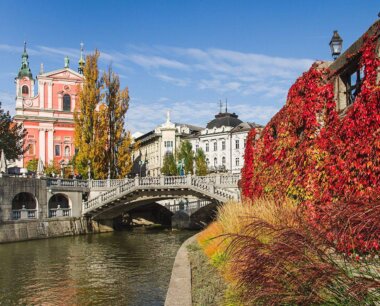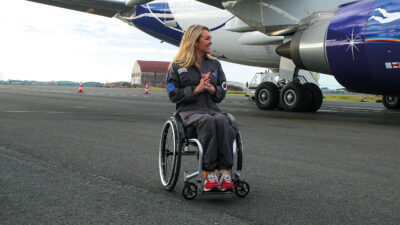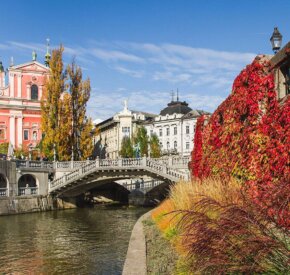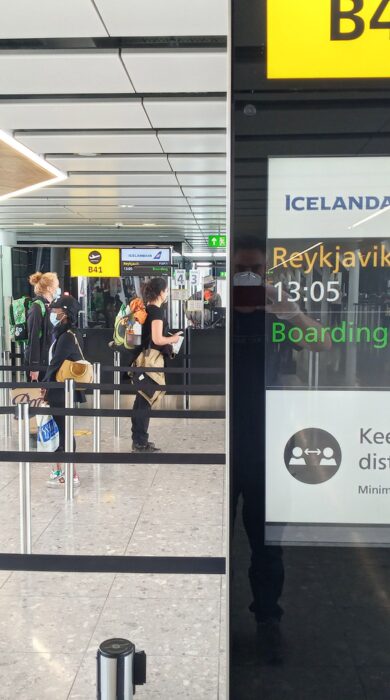
Travelling to Iceland during COVID: What it’s really like
As the world tentatively reopens, Mark Stratton takes the plunge and makes the journey from London to Reykjavik, discovering new travel rules, socially-distanced flights, and getting tested for COVID…
Along Reykjavik’s main street, Laugavegur, the aromas of shawarma and Vietnamese pho mingle on a bright midsummer’s evening. Raucous drinkers’ cheer premiership football in an English Pub and cocktails are served at street-side tables.
Nobody is social distancing and soon after leaving my hotel I feel relaxed enough to remove my mask amid the crowds. I settle down for a cold Gull beer, watching revellers celebrating Icelandic National Day. My first night out in three months.
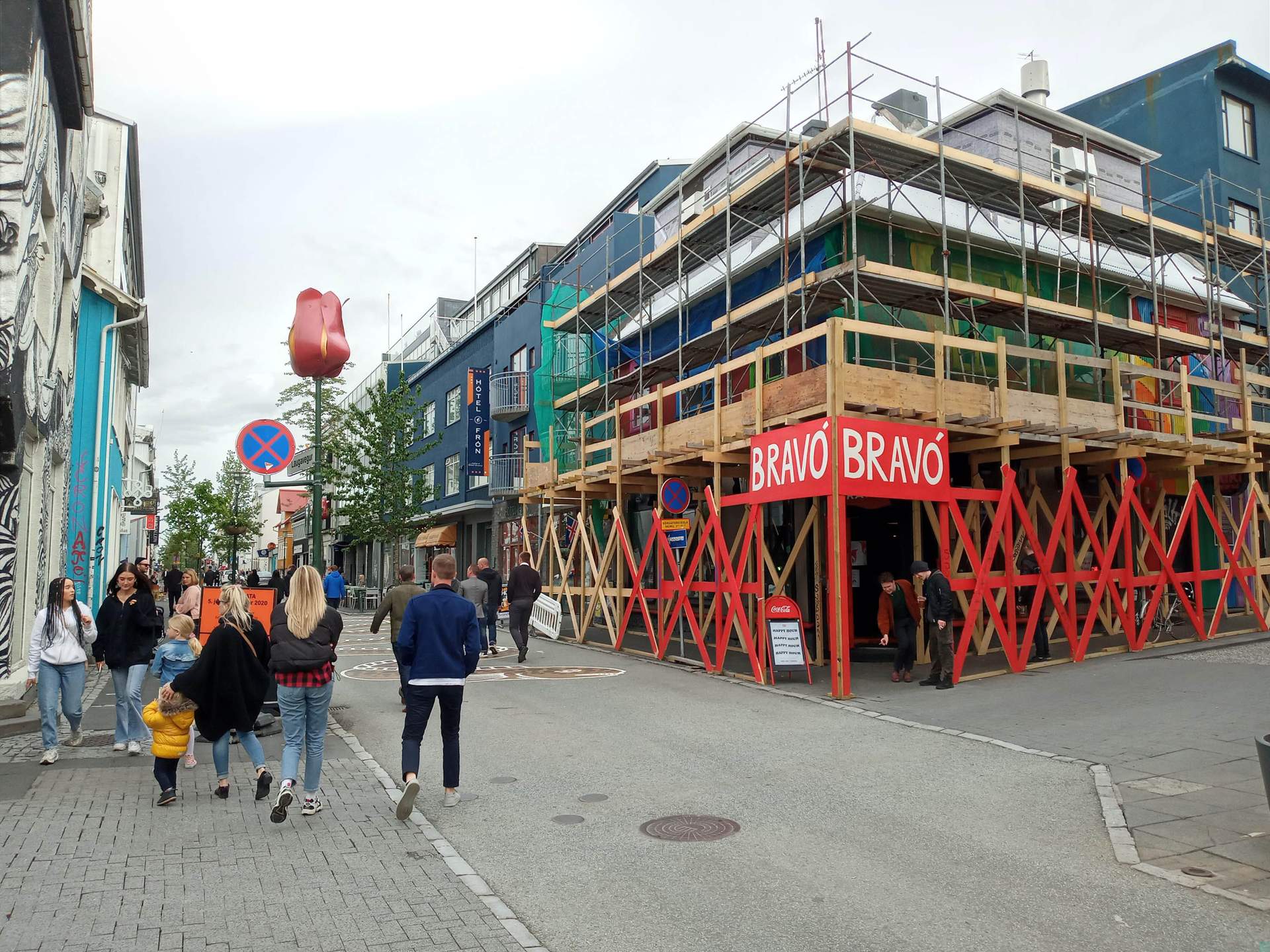
Mark explores Laugavegur, Reykjavik (Shutterstock)
Throughout the coronavirus pandemic, Iceland more-or-less carried on with everyday life. There was never any lockdown. The virus struck them hard in April and to date Iceland has registered 1,806 cases. 10 proved fatal. Yet by employing rigorous testing-and-tracing, including utilising police detectives, and prohibiting all bar essential travel into Iceland back in March, coronavirus cases fell to just eight throughout May and by mid-June only two cases remain.
Swimming pools and gyms have reopened with crowds of up to 500 people now allowed, while shops, bars, and restaurants never closed. Finally, on 15 June, Iceland became one of the first countries in the world to reopen to international arrivals without mandatory quarantine.
I decided to travel to Iceland just two days after it opened to experience how the new landscape of travel will look when we start travelling again.
Is travel to Iceland allowed?
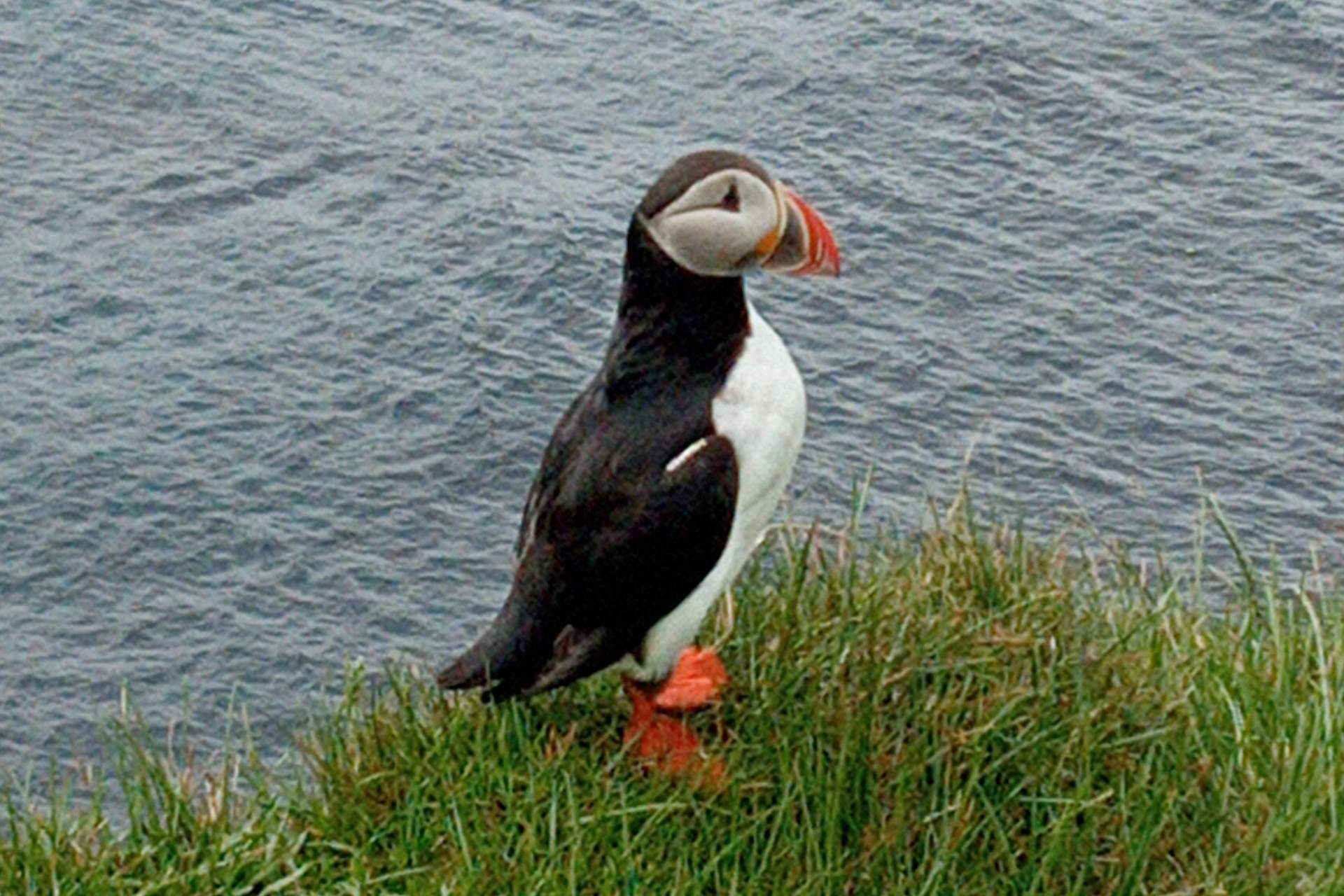
Are we allowed to spot puffins in Iceland? Here’s how Mark did it (Mark Stratton)
To do this, I had to go against the government’s Foreign & Commonwealth Office (FCO) travel advisory. These advisories do not single out Iceland but are a one-size-fits-all blanket warning against all but essential travel to every country on Earth.
This, allied to an ill-conceived and belated 14-day quarantine, is damaging the travel sector. It also meant I would arrive without travel insurance, because insurance brokers will not go against FCO advisories, although I do have a European Health Insurance Card. (This is at my own risk and I am not advocating anybody should do this.)
Yet it’s ironic because in terms of coronavirus infections, Iceland is a far safer country to be in than the UK. To prepare for international travellers, Iceland has introduced testing for coronavirus for every single international arrival. Currently, they have the capacity to test 2,000 passengers per day, which are free upon arrival until 30 June as they trial the system. Thereafter, it will cost 15,000 króna (£88). Failing the test will result in a 14-day quarantine.
The journey to Heathrow
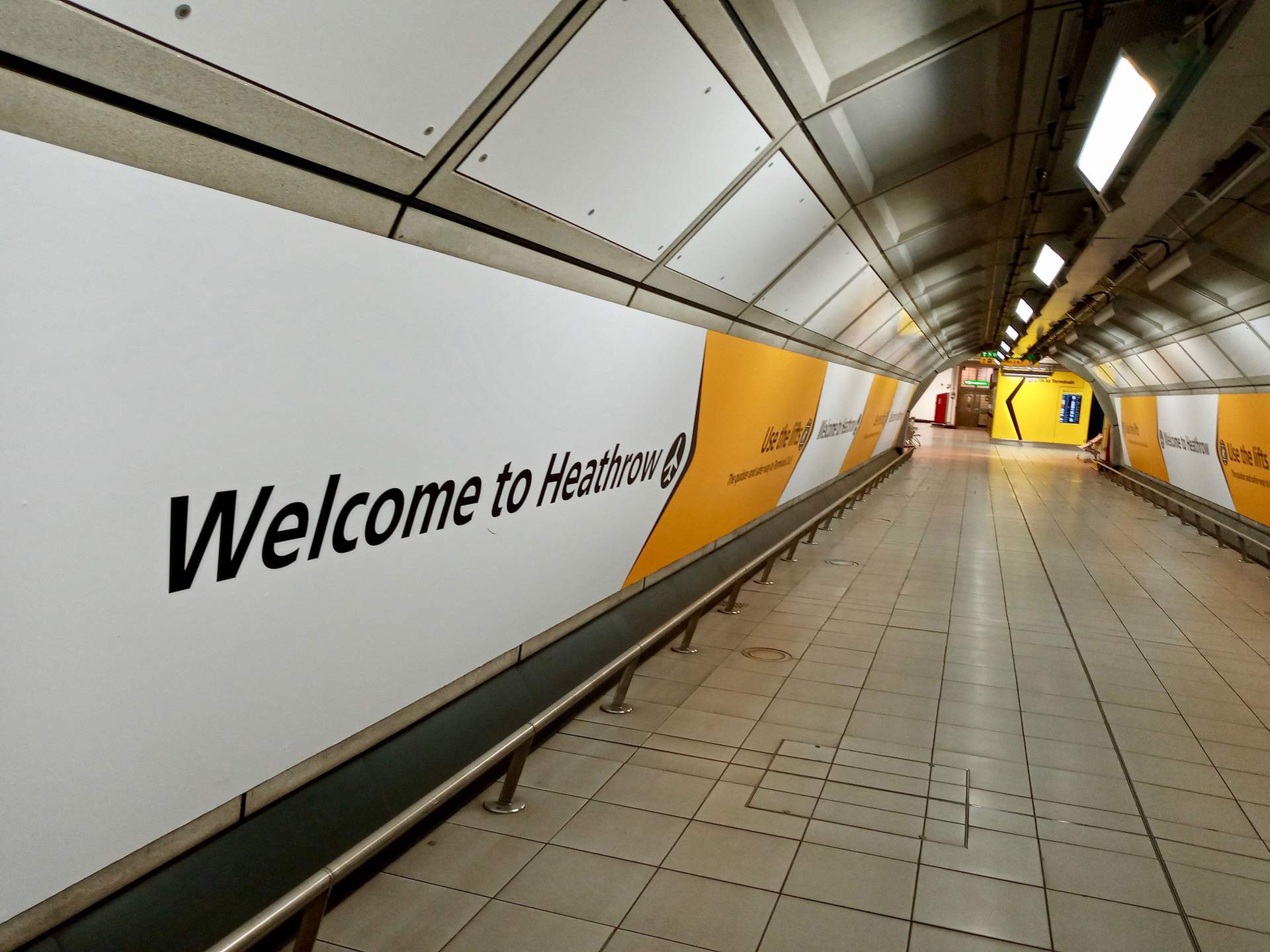
An eerie ‘Welcome to Heathrow’ (Mark Stratton)
I also wondered how I might feel travelling again while the threat of coronavirus remains. Since returning to the UK in mid-March from Antarctica, I’d been cosseted away from the ravages of coronavirus down at my remote base on Dartmoor. Thus, heading to Heathrow for my flight to Keflavik felt a little unsettling, encountering greater volumes of people on trains and in stations.
Heathrow is currently operating only two terminals (T2 and T5) reflecting a drastically reduced air timetable. And I was somewhat surprised at how crowded it felt with air travellers condensed inside T2. It made observing two-metre social distancing very challenging. It took 28 minutes from queuing for check-in to pass through security, which is rapid by Heathrow’s standards.

A sight not often seen: Heathrow’s Terminal 3 closed for business (Mark Stratton)
But I can only offer a six out of ten rating for the safety measures employed, and that would be generous. Check-in was somewhat shambolic and understaffed, while on the security carousel some staff had masks lowered beneath their noses.
Beyond security little is open and long queues stretched away from Boots and WHSmith, which seemed overly full. At the gate, passengers were warned they must wear face covering throughout the flight, and this was well observed even if the guy opposite to me removed his so he could FaceTime.
On the Icelandair flight to Reykjavik
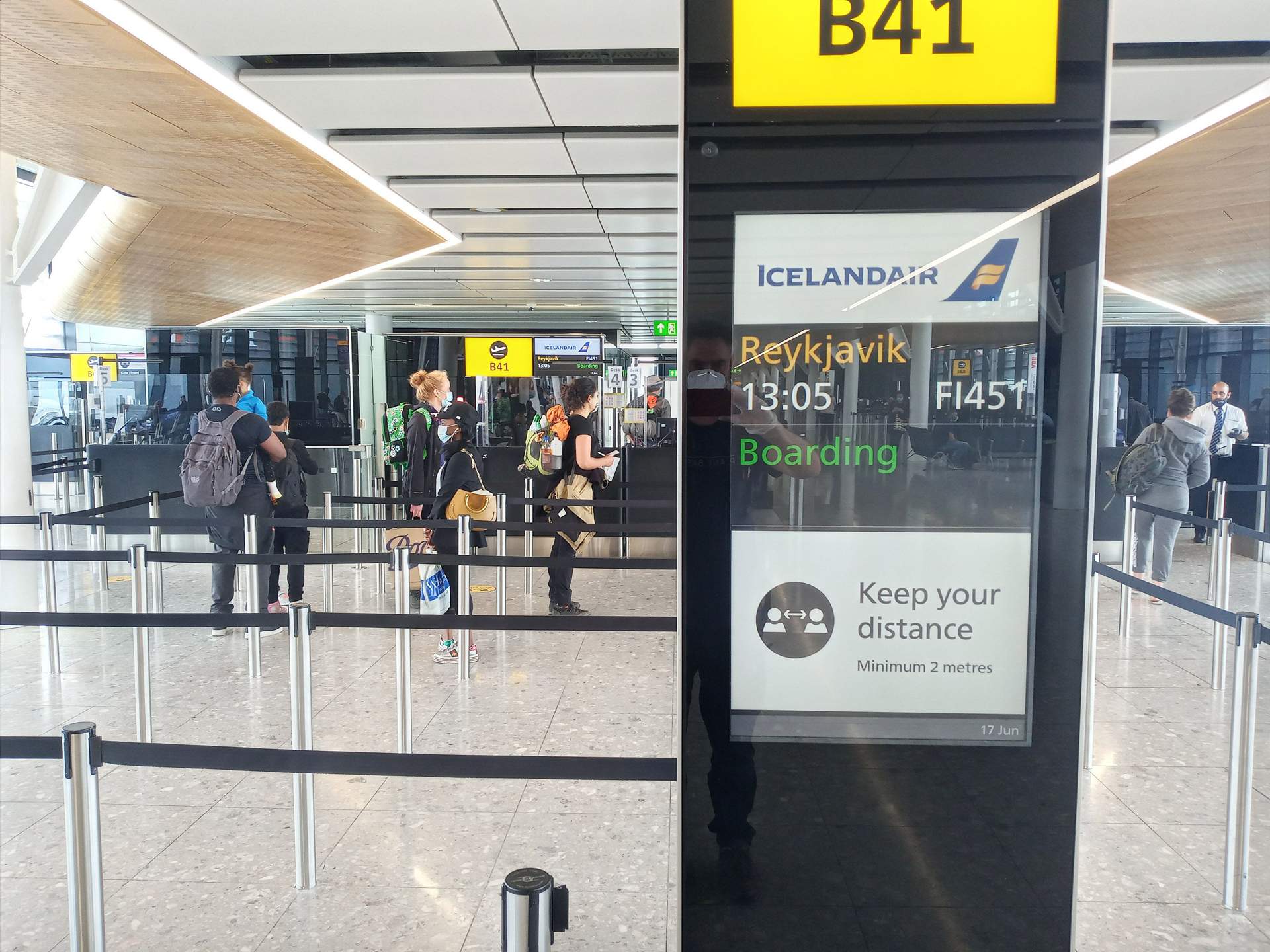
A quiet check-in queue (Mark Stratton)
Boarding the two-hour, 30-minute flight to Reykjavik with Icelandair was orderly – strictly enforcing loading passengers to the rear of the plane first.
I also nodded in approval when all wheelie cabin suitcases were summarily dispatched to the hold to avoid passengers creating bottlenecks when manhandling them into overhead lockers. Only cabin luggage fitting under the seat in front is now acceptable.
When I boarded a solitary stewardess offered bottled water, the only refreshment service of the flight. The flight was almost full yet a mosaic of gaps (often middle seats) created some form of distancing. Passengers were only allowed to use toilets at the front, those at the back reserved for cabin staff.
Almost all passengers were returning Icelanders. My neighbour, 22-year-old Alexandria from Reykjavik, had been to see her English boyfriend. “We’ve had so few cases in Iceland, so I was nervous flying to the UK. But the flight is well-managed so I feel relaxed,” she said.
I wondered what she thought about Iceland opening its borders to foreign travellers? “It’s good financially but we are a bit worried. They say 900 visitors arrived on 16 June. It feels too many”.
This indeed was my greatest consideration. Not that I might bring coronavirus back to the UK – because I will adhere to the quarantine. My nagging worry was that I might be responsible for bringing the virus to Iceland. I felt completely healthy prior to travelling, but of course I could’ve been asymptomatic.
Arriving and COVID-testing at Keflavik airport
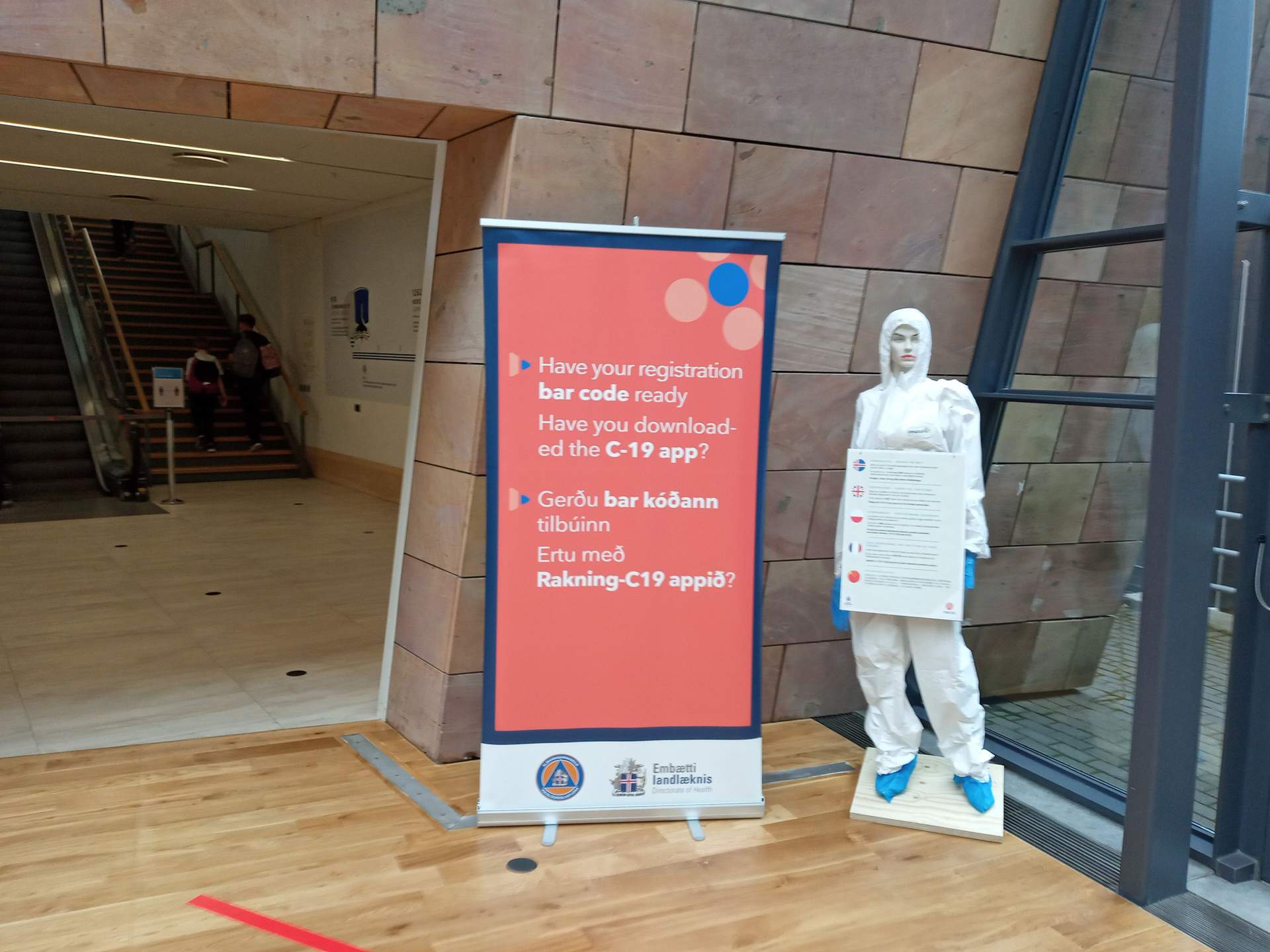
Keflavik International Airport in Reykjavik, Iceland (Mark Stratton)
The whole process from touching down at Keflavik thereafter was truly… well… world-class and definitely world-beating. First, we disembarked smoothly row-by-row, so much more agreeable than the usual pre-coronavirus scrummages. I was then ushered through the terminal by an army of staff requesting my barcode.
I’d completed a pre-registration form online before travelling that generated a barcode to be scanned for a Polymerase Chain Reaction (PCR) coronavirus test upon arrival. I’d also uploaded Iceland’s Rakning-19 test-and-trace app. Heavens above! A functioning and useful app.
Before immigration at Keflavik, a line of cubicles hosted two technicians in each who carried out the test. The whole procedure lasted around three minutes. It’s an unpleasant experience: a throat swab that makes you gag and a nasal one so deep it almost touches grey matter.
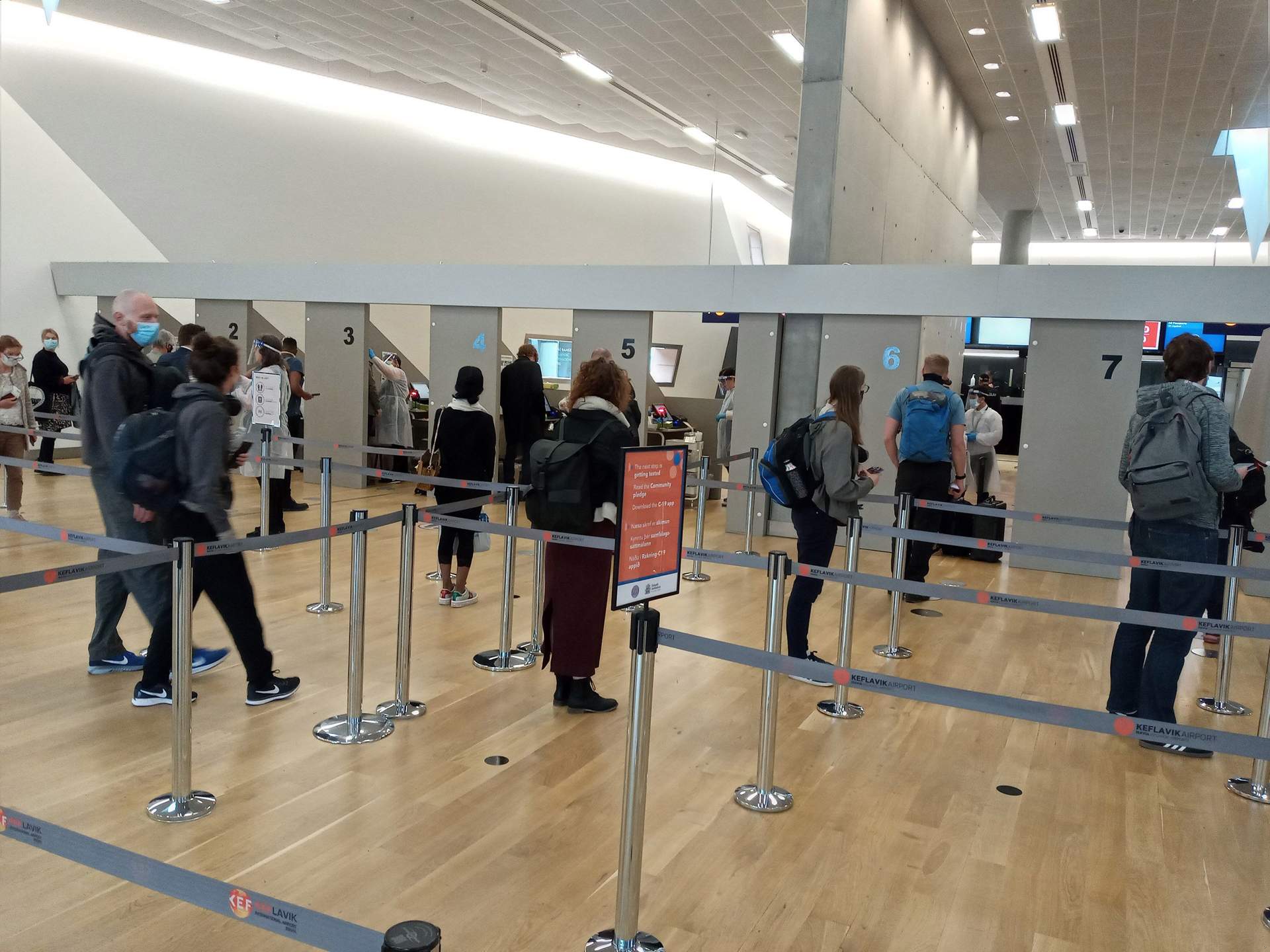
A short queue for Keflavik’s COVID test (Mark Stratton)
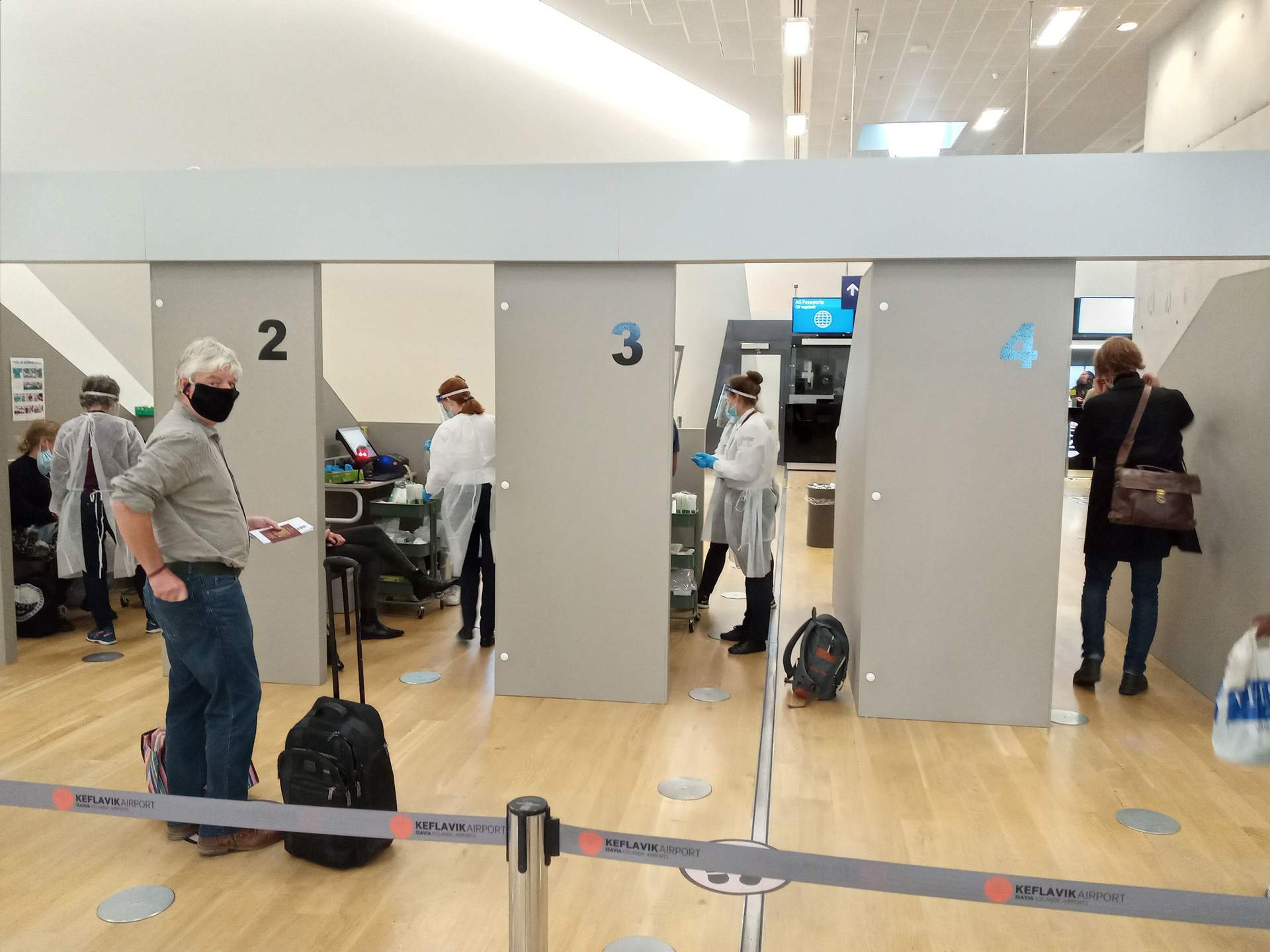
A closer look at the COVID testing stations (Mark Stratton)
Yet the whole process was clinically reassuring. I would be sent my result that evening via the Rakning-19 app and was asked not to go out of town and stay close to my hotel until it arrived. I had a night planned in Reykjavik and It made sense to collect a vehicle from the airport for the 47km drive into the capital rather than crowding onto an airport bus.
My hotel, Centerhotel Midgardur, had remained open throughout. Unsurprisingly they’d had very few guests, mainly Icelanders as their government had issued 5,000króna(£30) vouchers as a small incentive to spend on domestic tourism.
“We had a few foreign tourists stuck here who couldn’t get home. There was a family from India who were with us for three months,” said receptionist Lauren Deslauriers. Since Iceland reopened, I was their first Brit among a sprinkling of Danes, Norwegians, and Germans. “It won’t be a full summer but economically we desperately need visitors,” Lauren said. “Although I’d be lying to say there isn’t some anxiety with so many international arrivals”.
The COVID test results are in…
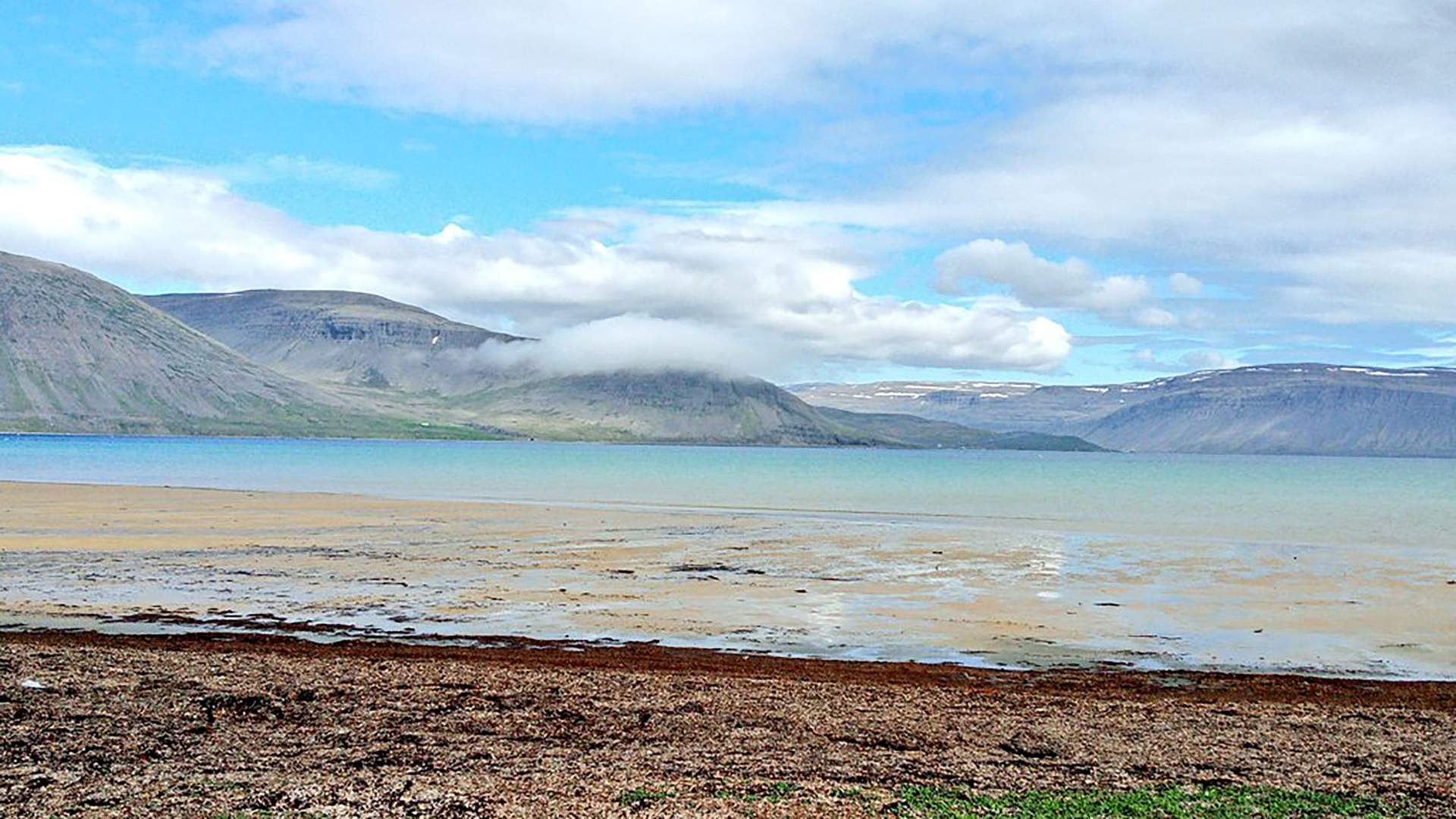
Mark’s journey through Iceland begins (Mark Stratton)
My own anxiety over the test result was short-lived. Within five hours – yes, tests really can be analysed rapidly – I was diagnosed negative for coronavirus. Of course, this doesn’t preclude I’d picked up the virus at Heathrow or on the flight. But if I felt any symptoms during my trip, I felt duty-bound to use the app to report myself. And I would.
Iceland had offered me salvation. The chance to travel again. My passion. I hit the road next morning to drive northwards towards the Western Fjords where I will hike, spot whales and puffins, and self-cater alone near volcanos and glaciers. The last few months had felt like a bad dream, but now, perhaps, a real rainbow is rising on the horizon.
